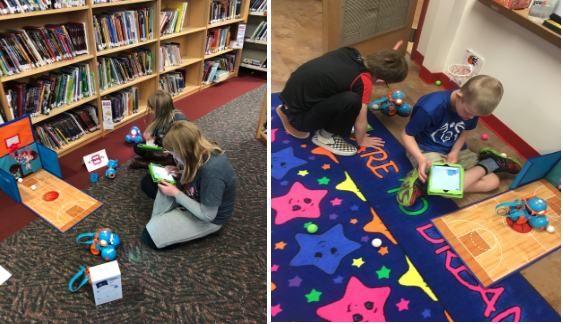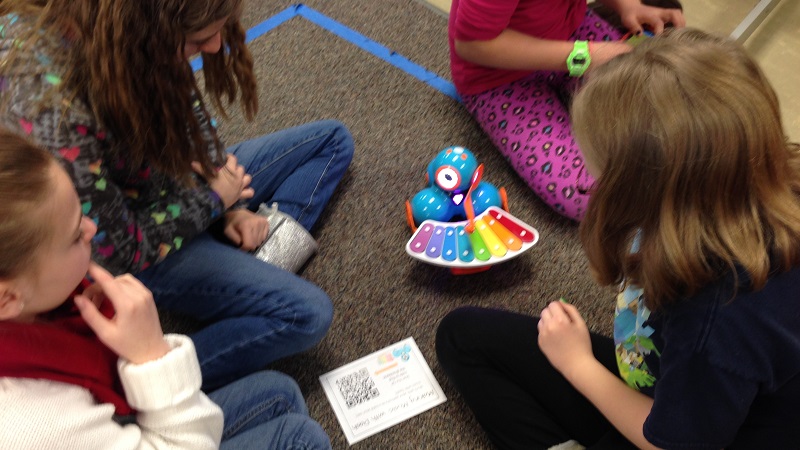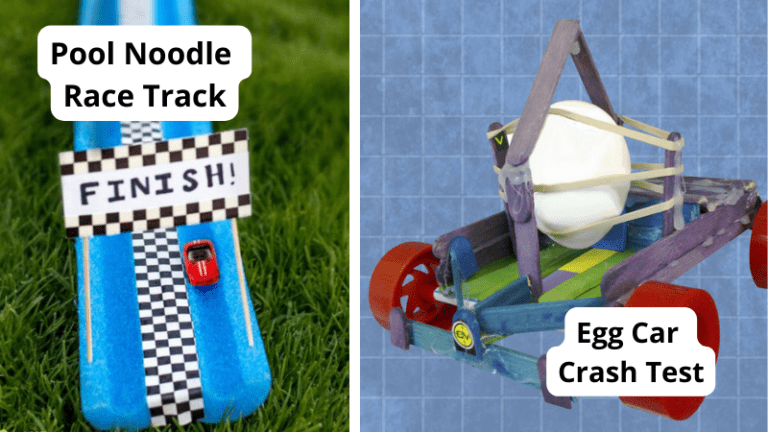Dreaming of robots in your classroom? While you might not have a programmable robot assistant to help you write lesson plans (yet), you can use robots in your classroom for some incredible student STEAM enrichment!
These fresh robotics projects from teachers like you will foster student self-expression, team building, and perseverance. The common denominator with these educators is simple: They let curiosity and creativity reign. When you encourage your students dig in and explore, you’ll help create the next generation of fearless, imaginative thinkers and doers.
1. Use robots in an animal habitat lesson.

Elementary students love studying wildlife and habitats, so why not welcome robots to the desert or an enchanted forest maze? Chandler, Arizona, kindergarten teacher Allison Davis, a 2018 Arizona Teacher of the Year Ambassador for Excellence, often uses Wonder Workshop’s robots to take a cross-curricular approach with her students. The KinderCats, as she affectionately calls them, haven’t met a number sequencing challenge, fairy-tale adventure, or natural science experiment they didn’t love to take on. Here, students coded the Dash robot to make its way through the maze, answering animal and habit questions along the way.
2. Teach students their left from their right—and code a parade.

Source: @kgakindercats
Allison noticed that some of her kindergartners were struggling with distinguishing their left from their right side. In true creative kindergarten teacher fashion, Allison thought BIG—Macy’s Thanksgiving Day Parade big! Allison had her students create character balloons for the parade, build the parade route, and of course, code Dash to maneuver left and right through the streets of New York City.
Allison says coming up with ideas for using robots in the classroom has given her teaching a new spark.”It’s opened up that door of endless possibilities for me as a teacher, and it’s fun for the kids to see that I don’t have all the answers. They’ll say, ‘Do you think we can?’ And I’ll say, ‘Well, I don’t know, but we should probably try!'”
3. Get sporty.

Oregon, Wisconsin, technology-literacy teacher Velvet Holmes has used Wonder Workshop’s Dash & Dot robots to have her third and fourth graders code bulldozer challenges, solve math problems, play music with Wonder’s xylophone attachment, create competitive robot races and, a real crowd-pleaser, conduct the Dash basketball challenge.
Students challenge themselves to code Dash to make three baskets in a row. They can work independently or make it a competition, like the real-life court version of P-I-G. Move Dash each time a student succeeds in their code (their robot makes the shot) to make it a bit more challenging.
4. Host a robotics party.
https://www.facebook.com/technologyrocksatoregonschooldistrict/videos/2072542129531254/
Velvet and her school district technology team recently hosted their Code Like a Girl Party to encourage elementary-school-age girls to explore the world of coding and robotics.
Velvet says the annual party, now in its fourth year, started with younger learners but has now grown to be more of a fifth and and sixth grade event. She’s seeing a lot of results. “I started this party to encourage more girls to learn to code while building confidence and problem-solving skills,” she says. “The girls are always motivated to keep trying and creating new things. Girls can do anything! I look forward to this every year!”
5. Launch and destroy.
5th grader, Dash, and the launcher for the win!!! @WonderWorkshop #lpscompsci #CSK8 pic.twitter.com/dDmiJyHdNy
— Susan Prabulos (@fabprab) May 15, 2018
Lincoln, Nebraska, K–5 teacher Susan Prabulos blogs about her robots, kids, and coding adventures and is constantly amazed at how much her students push the limits of creativity and curiosity.
Susan’s fifth graders coded and debugged Dash and its accompanying Launcher until they found success. Practice makes progress! “My students take computer science concepts from a 2-D environment on the computer or iPad to a 3-D model,” Susan says. “They love interacting with the robots, debugging codes, and completing challenges. I love to see the excitement on their faces when they create a code and watch Dash carry it out.”
6. Try a jam session.

Susan likes getting musical with her students by working with the xylophone attachment for Dash. “I did a centers rotation for groups and made task cards, so I wasn’t giving directions over and over again,” Susan says. “The kids loved playing premade songs and creating their own music! It’s fun to watch their collaboration. They are much better at writing music than I am!”
7. Navigate mazes. Robots can do anything (so can you).

Sandra Wiseman has been a librarian in Wheeling, West Virginia, for 35 years. Sandra’s journey, like many, started with the Hour of Code. From there, she devoured all things robotics, coding, and STEAM. Sandra’s brought in different software, products, and apps for instruction; led robotics clubs; had students participate in Wonder Workshop’s competitions; and much more.
Above is your typical day in class, Sandra says, where third graders use a gridded mat to set up a simple maze featuring obstacles (red Solo cups, for the win!). Students use Wonder’s Block Code app to write a program to move the robots around the cups without touching them. “The kids had been doing block coding on the tablets, and this was the first time they had tried out their skills on the robots.”
From cups to competitions, Sandra’s constantly and consistently challenged herself to bridge the gap between “can we do this?” and “why not?”
Sandra says, “Do not be not be afraid to try something new. I certainly had no background and didn’t grow up as a digital native. I’m more of an immigrant. Start small and see what happens. You might find learning to code and operating a robot as much fun as your students do.”

